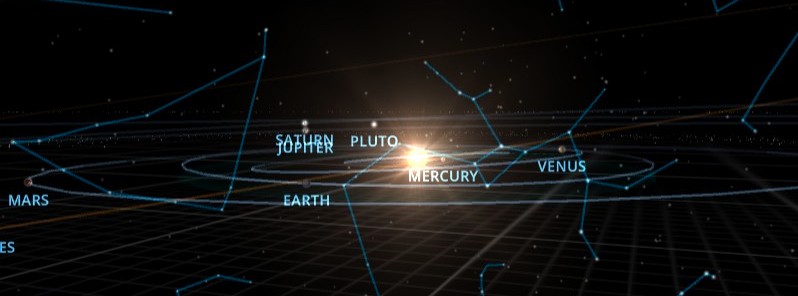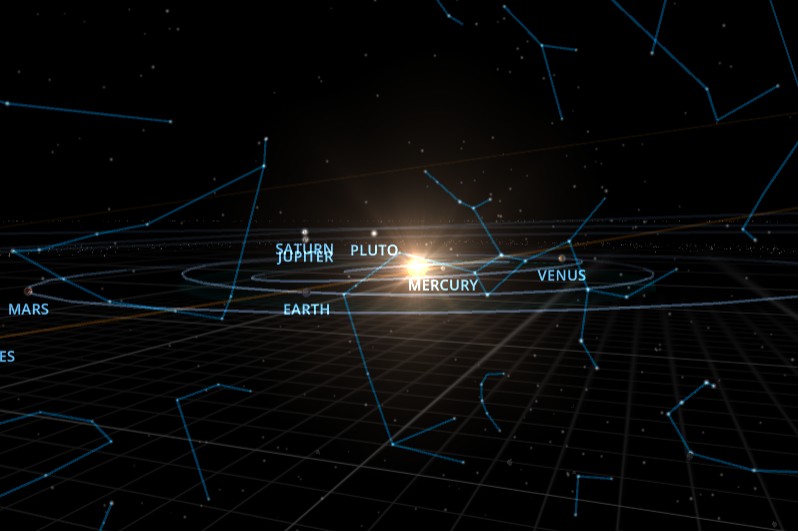Great conjunction of Jupiter and Saturn on December 21

A rare great conjunction of Jupiter and Saturn will take place at 18:11 UTC on December 21, with the two planets passing just 6.1 arcminutes (about one-fifth the apparent width of the moon) of each other, as seen from Earth. Coincidentally, the December solstice is taking place on the same day.
The two planets will lie deep in the southern sky at the time of the conjunction, at a declination of 20°S, making the best views from the southern hemisphere.
But they will still be visible to any northern observers who are willing to find a clear southern-western horizon.
They will only be visible in the early evening sky so the best time to see them will be soon after sunset. To some, they might appear as a single bright star.
The last time most of the world had an opportunity to view the great conjunction was on March 5, 1226, when they were separated by just 2 arcminutes.
The last time when they passed so close to each other, however, was on July 16, 1623 (5 arcminutes apart), but they weren't visible from the entire planet.

Great conjunction of Jupiter and Saturn at 18:11 UTC on December 21, 2020. Credit: Solar System Scope, TW
The table below, courtesy of Joe Rao — an instructor and guest lecturer at New York's Hyden Planetarium, shows data for all great conjunctions of Jupiter and Saturn within 6 arcminutes from 1 A.D. to 3000 A.D.
| Date | Separation | Time | Visible? |
|---|---|---|---|
| March 6, 372 | 2 arcmin | morning | yes |
| December 31, 431 | 6 arcmin | evening | yes |
| July 23, 769 | 4 arcmin | morning | no |
| March 5, 1226 | 5 arcmin | morning | yes |
| July 16, 1623 | 5 arcmin | evening | no |
| December 21, 2020 | 6 arcmin | evening | yes |
| March 15, 2080 | 6 arcmin | morning | yes |
| August 24, 2417 | 5 arcmin | morning | yes |
| July 6, 2477 | 6 arcmin | evening | yes |
| December 25, 2874 | 2 arcmin | evening | yes |
The rarity of great conjunctions is caused by the slow motion of Jupiter and Saturn across the sky.
Among the planets that are visible to the naked eye, they are the two most distant from the Sun. It takes Jupiter 11.86 years to orbit it and 29.5 years for Saturn.
As the two planets gradually move through the constellations at different speeds, they follow almost the same path across the sky, called the ecliptic.
Periodically, Jupiter catches up with Saturn and overtakes it, resulting in great conjunction — on average once every 19.6 years.
Many articles have already explained the astrological aspect of this great conjunction. Universally, however, the best advice still remains that it's always a great time to take conscious control of your life.
Featured image credit: Solar System Scope, TW

Is there a beautiful and rare astronomical event in the heavens? No problem. My state is cloudy. Total Lunar eclipse? Cloudy. Comets? Cloudy.
Exactly ‘8’ years after the Mayan Prophecy 21/12/2012.
8 representing two planets.
Jupiter-Saturn conjunctions happen every 20 years. But these conjunctions aren’t all created equal. The 2020 great conjunction of Jupiter and Saturn will be the closest since 1623 and the closest observable since 1226! Moreover, the conjunction of Jupiter and Saturn this year will be accompanied by another celestial event, the winter solstice. So, Jupiter and Saturn will be closest – only 0.1 degrees apart – on the day of the solstice, December 21, 2020.
Based on, my theory of the magnetic structure of matter (magnetic Universe), the activity of the Sun is modulated to a certain degree by the planetary orbital positions. Thus, there is a magnetic connection between the Sun and all the planets, and the connection is the strongest between Jupiter, Saturn, and the Sun especially during solar minimum. Therefore, the great conjunction of 2020 will induce a bigger influence on the solar activity of the Sun, than the previous conjunctions. The Sun will emit a higher amount of gamma-ray energy as a result of this celestial event. However, I sincerely hope, this extra amount of gamma radiation, will not be the last straw that broke the camel’s back. The earth’s magnetic field is in a declining stage, and both the atmosphere and the core of the planet is highly saturated, and any influx of intense magnetic radiation can cause a serious problem